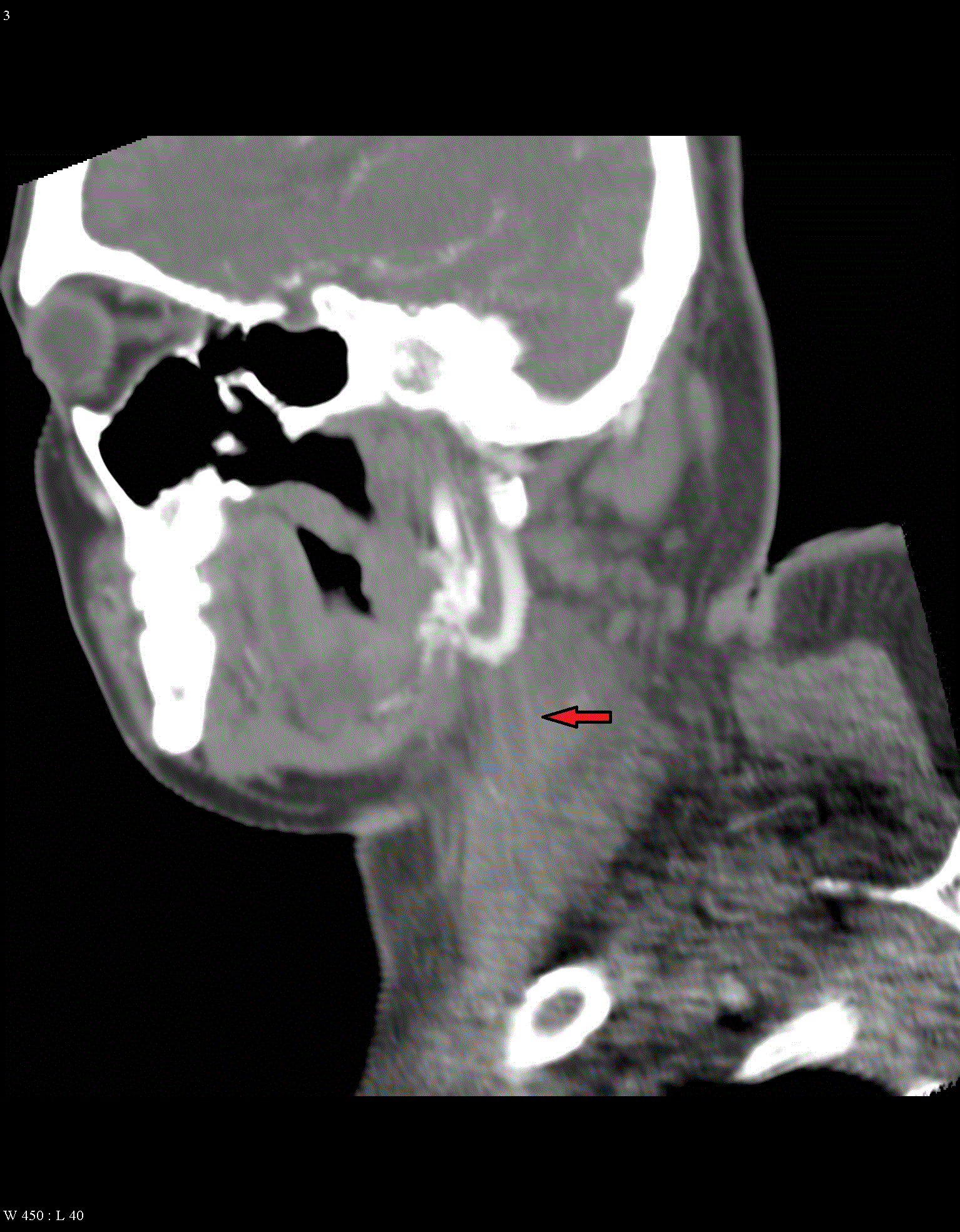Back to 2016 Karmody Posters
A Case of Lemierre’s Syndrome Status Post Blunt Trauma
RATNA C. MEDICHERLA, MD, Amit R. Shah, MD, Ross Lyon, MD, Edward Chao, MBBS, Jay G. Hochsztein, MD, Aksim Rivera, MD.
Jacobi Medical Center, Bronx, NY, USA.
OBJECTIVES:Lemierre’s Syndrome (LS) is a rare condition characterized by acute tonsillopharyngitis, internal jugular vein (IJV) thrombophlebitis, bacteremia, and septic embolization, which develops as a complication of oropharyngeal infection. We report a case of a 25 year-old man who developed LS due to blunt injury from seatbelt after a motor vehicle collision (MVC) and was treated with resection of left IJV and washout and debridement of surrounding tissues.
METHODS: Patient was a restrained driver in a MVC who presented with left neck pain and superficial abrasions from seatbelt. Work-up was negative, and he was discharged from Emergency Department. He returned 5 days later with persistent left neck pain, fever, malaise, odynophagia, Fusobacterium necrophorum bacteremia, and sepsis. Ultrasound and CT scan of the neck showed extensive occlusive left IJV thrombophlebitis, multilocular abscesses, and extensive anterior neck stranding. 
RESULTS:Patient was admitted to ICU and started on broad-spectrum antibiotics. His condition continued to deteriorate with septic shock complicated by disseminated intravascular coagulation. Therefore, he was taken to the operating room for direct laryngoscopy (which revealed no injury to aerodigestive tract), left neck exploration, enbloc resection of left IJV, drainage of abscesses, and washout/debridement of necrotic tissue. He underwent two subsequent washouts showing no further signs of infection prior to closure. He improved dramatically and was discharged on post-operative day thirteen on oral antibiotics and aspirin.
CONCLUSIONS:Although LS is a rare condition affecting 0.6-2.3 per million/year, it is potentially fatal without expeditious diagnosis and treatment. Oropharyngeal infection can quickly progress to peritonsillar abscess, which can precipitate thrombophlebitis of IJV and further systemic complications leading to significant morbidity and mortality rates up to 5-20%. Treatment involves antimicrobials and surgical intervention including ligation/excision of IJV and drainage/debridement. Use of anticoagulation is controversial, but strongly considered if there are septic emboli or clot progression. We present a case of LS caused by blunt injury from seatbelt without evidence of oropharyngeal injury. To our knowledge, this is the first reported case of LS secondary to blunt trauma. We postulate that external trauma to the neck from seatbelt likely caused microscopic injury to oropharyngeal tissues resulting in IJV thrombosis and infection.
Back to 2016 Karmody Posters
|







